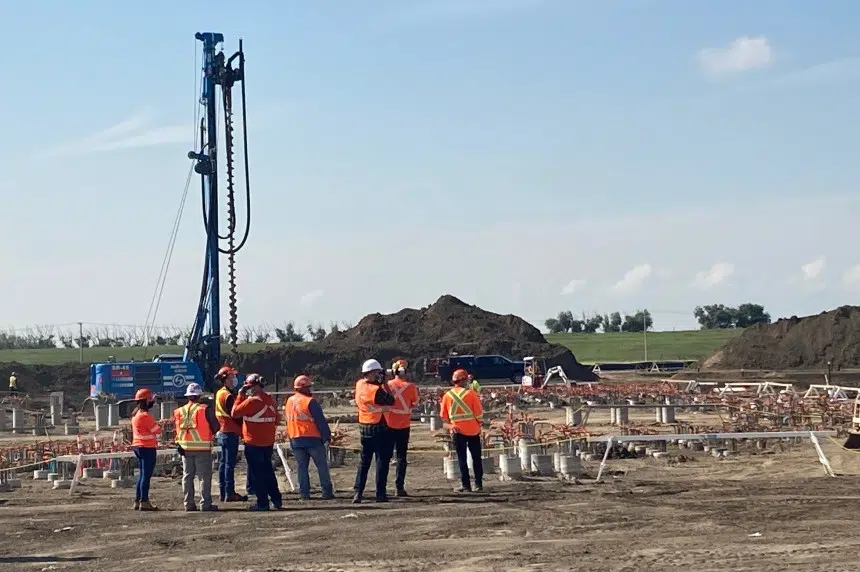Up to 500 people can expect to find work building the Great Plains Power Station, now that construction has started on SaskPower’s newest natural gas power plant located southeast of Moose Jaw.
Once it’s finished in 2024, the power plant will generate 360 megawatts of power, enough to serve about 360,000 homes.
SaskPower CEO Mike Marsh said Friday a generation station like this one will produce 60 per cent fewer emissions when compared to a coal-fired plant.
“We’re moving down a path every time we do this to continually lower our carbon footprint and move towards a cleaner future for Saskatchewan,” Marsh said.
“We’re doing it with the mind of reducing our emissions over the long run and cleaning up the carbon emissions from the electricity sector in the province.”
The Crown corporation plans to retire a coal plant in Estevan by the end of this year. Another will be closed at the end of 2024. Marsh said the Great Plains Power Station is needed to make up for that generation while providing baseload power.
Marsh called the location a “natural fit,” being close to potash mines as well as to Moose Jaw and Regina, where power consumption is high. He also cited access to a natural gas pipeline and a transmission line.

Moose Jaw Mayor Fraser Tolmie poses for a photo with SaskPower CEO Mike Marsh. (Joseph Ho/980 CJME)
The total price tag for the project is $760 million. SaskPower has pledged more than $140 million in “local participation” and more than $10 million in “Indigenous participation.”
Over the lifespan of the plant, between 20 to 25 years, there will be plenty of work in maintaining and running the plant, Marsh said. Twenty-five permanent positions will be created to operate it.
Don Morgan, the minister responsible for SaskPower, said the economic impact of the project will be immense.
Officials have seen growth in electricity consumption, which is only expected to continue trending up as the economy improves.
“This is part of the growth of the province. We’re needing to increase the generating capacity. We use about five gigawatts of power on an annual basis right now and that will continue to grow as more businesses come online,” Morgan said.
Nekaneet First Nation Chief Alvin Francis said a partnership with SaskPower will give members of the community opportunities to hold good jobs.
He said many youth are interested in a career in power engineering. The agreement would allow them to work summer jobs, Francis said.
“It’s to ensure they are given a chance, like a summer opportunity. Once they get out of school, they can work during the summer. But it’s really up to them to prove themselves,” Francis said.
“They have an opportunity to get in there. I can put my foot in the door for them but that’s all I can do. There are no guarantees of any kind.”
Moose Jaw Mayor Fraser Tolmie was in a celebratory mood but said he also felt relief to see this day. He said SaskPower first wanted to put the plant elsewhere; as well, he had worries about the federal carbon tax, and then a pandemic.
“We’re very, very excited, not only about this project but what this project can mean to our community in the future for other opportunities. This could be a catalyst of good things to come in the future,” Tolmie said.
As a “combined-cycle” facility, the power plant will turn exhaust heat into steam, which turns a turbine to create power. Morgan called it the “best option” for natural gas, making it one of the cleanest facilities of its kind in the world.
He said the province is expanding its energy portfolio to include more power sourced from solar, wind, biomass and nuclear. However, for baseload, Morgan said options are limited to hydro, coal and natural gas because of the intermittency of renewables.
“In the future, hopefully, we get batteries or better systems but that’s where we need to go,” he said.







